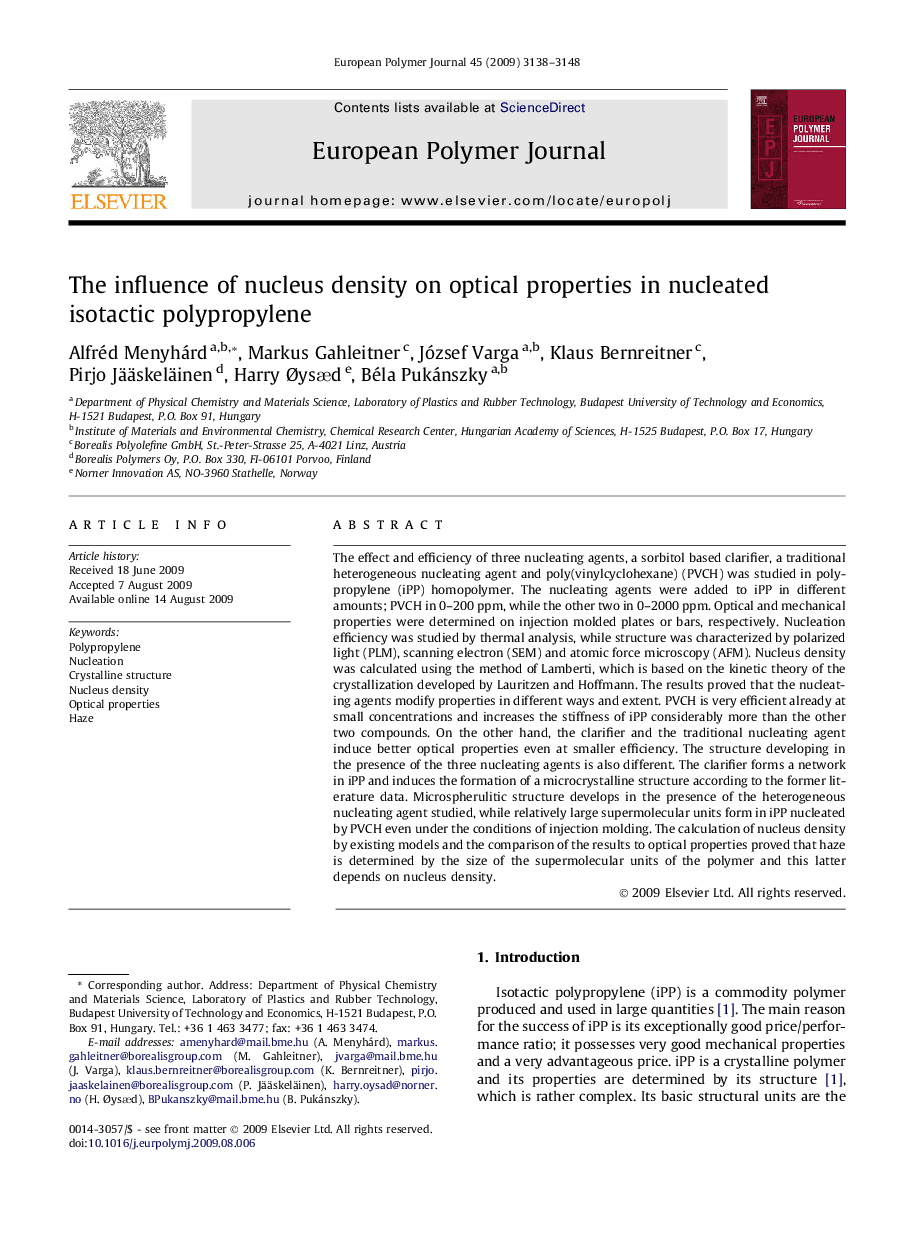| Article ID | Journal | Published Year | Pages | File Type |
|---|---|---|---|---|
| 1402681 | European Polymer Journal | 2009 | 11 Pages |
The effect and efficiency of three nucleating agents, a sorbitol based clarifier, a traditional heterogeneous nucleating agent and poly(vinylcyclohexane) (PVCH) was studied in polypropylene (iPP) homopolymer. The nucleating agents were added to iPP in different amounts; PVCH in 0–200 ppm, while the other two in 0–2000 ppm. Optical and mechanical properties were determined on injection molded plates or bars, respectively. Nucleation efficiency was studied by thermal analysis, while structure was characterized by polarized light (PLM), scanning electron (SEM) and atomic force microscopy (AFM). Nucleus density was calculated using the method of Lamberti, which is based on the kinetic theory of the crystallization developed by Lauritzen and Hoffmann. The results proved that the nucleating agents modify properties in different ways and extent. PVCH is very efficient already at small concentrations and increases the stiffness of iPP considerably more than the other two compounds. On the other hand, the clarifier and the traditional nucleating agent induce better optical properties even at smaller efficiency. The structure developing in the presence of the three nucleating agents is also different. The clarifier forms a network in iPP and induces the formation of a microcrystalline structure according to the former literature data. Microspherulitic structure develops in the presence of the heterogeneous nucleating agent studied, while relatively large supermolecular units form in iPP nucleated by PVCH even under the conditions of injection molding. The calculation of nucleus density by existing models and the comparison of the results to optical properties proved that haze is determined by the size of the supermolecular units of the polymer and this latter depends on nucleus density.
Graphical abstractFigure optionsDownload full-size imageDownload as PowerPoint slide
